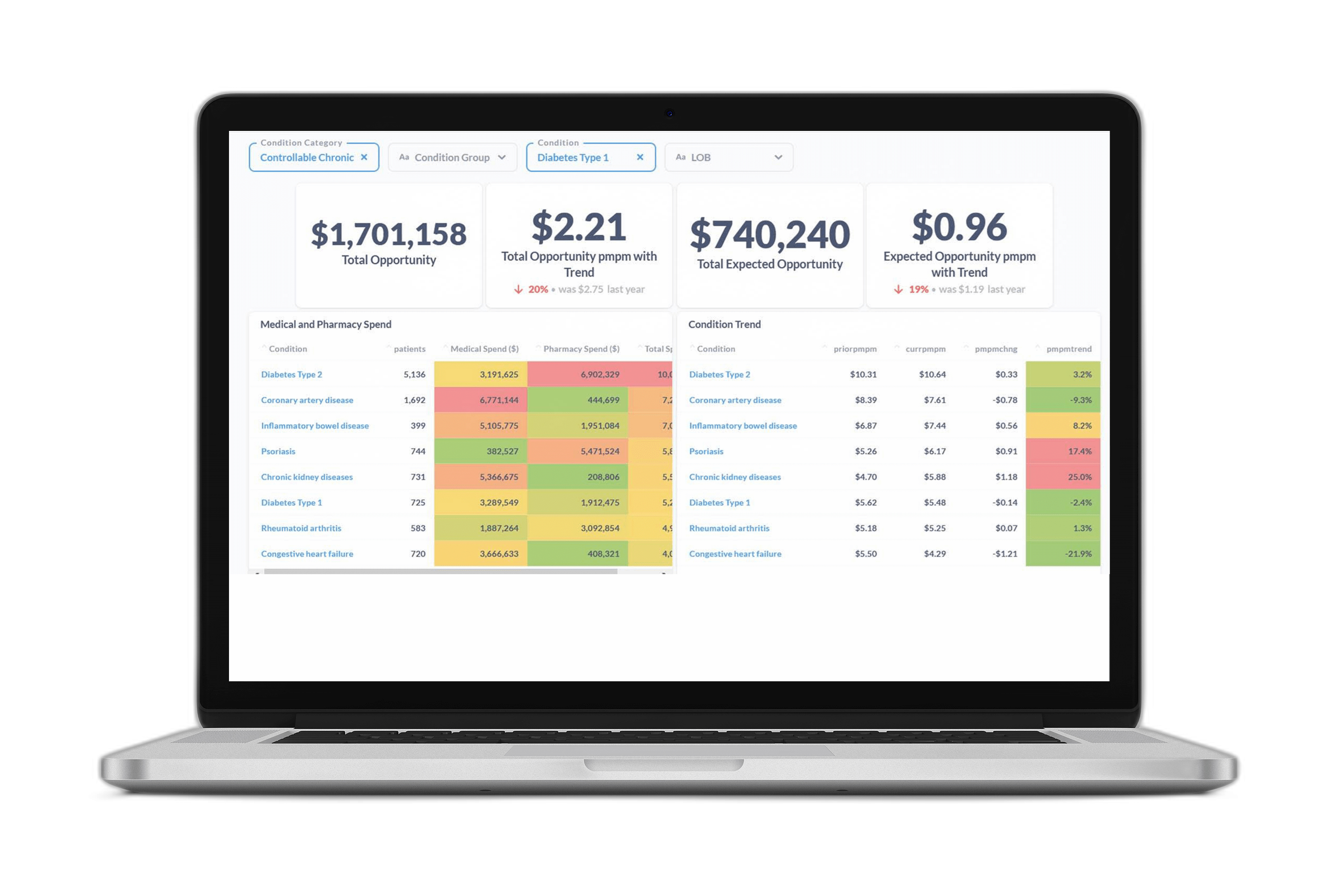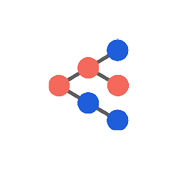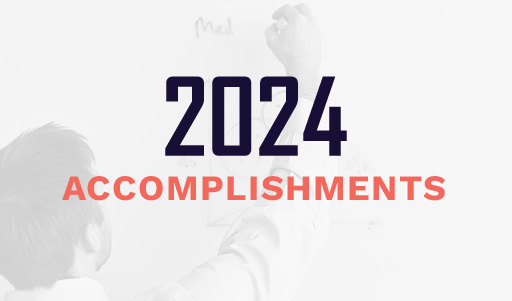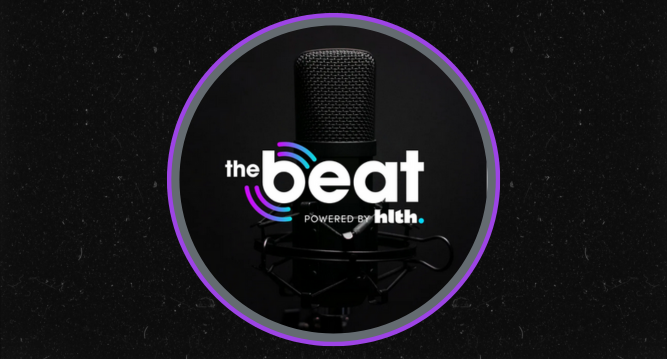Advances in machine learning and artificial intelligence have allowed healthcare organizations to personalize their care management programs through highly targeted interventions aimed at patients with the greatest likelihood of making lifestyle changes.
Let’s explore how one national payer leveraged the AI-powered Certilytics Health Index (CHI) to optimally allocate its care management resources and substantially increase program value.
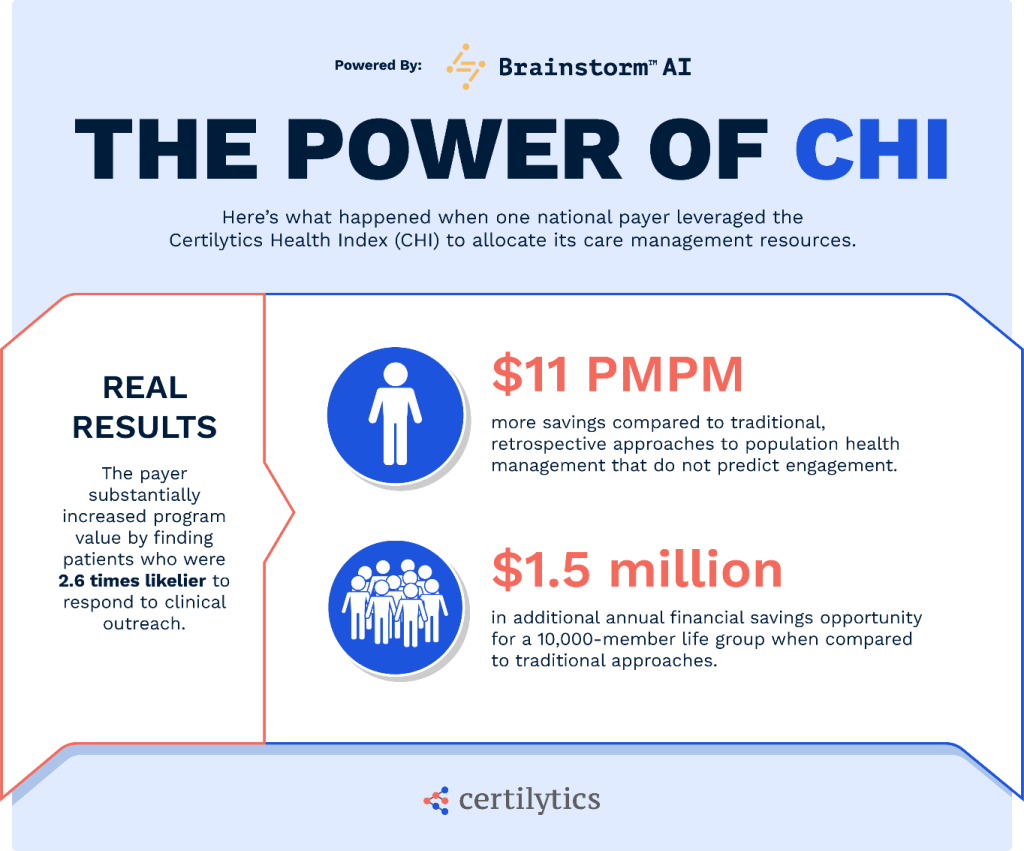
The Problem
Traditionally, “at-risk” patients are identified for care management intervention based on three factors:
- Open Gaps in Care
- Historic Utilization / Costs
- Retrospective Financial Risk
Unfortunately, these factors fail to provide program managers with a complete picture of their patients’ emerging clinical risk profile. By the time program managers react on the basis of open gaps in care or avoidable utilization, patients have oftentimes already incurred a significant (and avoidable) spike in their healthcare costs.
Furthermore, when patients are identified based on their financial risk, program managers have the added complexity of discerning between risk that is impactable and risk that isn’t. Indeed, the patients with the most absolute risk rarely have the most modifiable risk.
The Solution
The Certilytics Health Index (CHI) is a proprietary algorithm that stratifies patients based on:
- Emerging Clinical Risk: the prospective likelihood of a patient developing chronic diseases or utilizing high-cost services such as the Emergency Room.
- Prospective Financial Risk: a patient’s predicted financial risk over the next twelve months based on medical history, utilization patterns, gaps in care, demographic data, and other non-traditional data sources.
- Propensity for engagement: the likelihood a patient will adjust behaviors because of outreach from a nurse or care manager.
The result is a straightforward, disease-agnostic, and transparent mechanism for identifying the optimal combination of these factors and reaching out to the right patient at the right time.
By accounting for a patient’s propensity for engagement, the Certilytics Health Index (CHI) has a substantial edge over traditional approaches to population health management. CHI uses the Certilytics Engagement Model to identify which patients are likely to respond to clinical interventions and make the necessary changes—allowing care managers to more effectively prioritize patients for outreach.
CHI combines the Certilytics Engagement Model with clinical and financial risk models all developed, trained, and scored using Brainstorm™ AI, a flexible machine learning platform designed to overcome the operational challenges of data science in the healthcare space. Brainstorm™ AI focuses on data science as a process – enforcing interoperability and best practices throughout the entire model development cycle, from data creation to post-deployment performance monitoring.
Results
Certilytics helps care managers be more effective at prioritizing patients for outreach. In fact, the national payer cited earlier found that patients identified as highly likely to engage by the Certilytics Engagement Model were 2.6 times likelier to respond to clinical outreach than the average patient eligible for inclusion in the model.
By accounting for engagement, the CHI score results in additional savings opportunity—and better health outcomes—relative to traditional methods.
For example, when CHI was used to stratify at-risk members, there was a substantial increase in savings opportunity relative to what would have been identified through traditional methods. This allows care managers to prioritize their interventions toward patients most likely to make behavioral changes. In addition to simplifying the process, CHI had the following results:
- Stratification with CHI identified over $11 PMPM more savings opportunity than stratification on the basis of historic utilization, open gaps in care, and prospective financial risk.
- For a 10,000-member life group, this translates to nearly $1.5 million in additional annual financial savings opportunity when compared to traditional approaches.
To learn more about optimizing your care management programs with the Certilytics Health Index, reach out to us at contact@certilytics.com.
